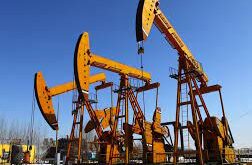A flurry of recent oil market forecasts have sent a lot of mixed messages about what to expect both in the near-term and over the next several years. Is U.S. shale about to flood the market. setting off another bust? Or is demand so strong that with the oil market already rapidly tightening. another price rally is in store?
Obviously. nobody knows how to untangle the long list of variables that will ultimately decide what happens next. but the divergence in opinions is rather striking.
By and large. the discrepancy is over the difference between the short-term and the medium-term. Surging U.S. shale production is keeping the market well supplied right now. but soaring demand and the lack of major conventional projects in the works will lead to a price spike somewhere down the line.
Nevertheless. there is also disagreement over the immediate future. We are currently in the “calm before the storm.“ according to Gary Ross. global head of oil analytics and chief energy economist at S&.P Global Platts. “Pressure is going to build on crude prices.“ he said in an interview with the WSJ. “We’re not feeling it now. but we will.“
Ross argues that oil demand is growing so quickly. that the market will absorb all the extra supply. He says China and India alone will take on an additional 1.1 million barrels per day (mb d). Meanwhile. oil inventories are sharply down. thanks to the OPEC cuts. After refineries finish up maintenance season. the oil market will wake up to the fact that supplies are incredibly tight. Ross argues. “The world is going to be short come peak season.“ he told the WSJ. “When the music stops. someone’s not going to have a seat.“
This view is echoed by Goldman Sachs. which made headlines a few weeks ago when it predicted that the elusive oil market “rebalancing“ had probably already arrived. “The rebalancing of the oil market has likely been achieved. six months sooner than we had expected.“ Goldman analysts wrote in a research note a little more than a month ago. The investment bank said that inventories were probably already back to the five-year average level. and because the data is published on a lag. the risk was that OPEC would end up overtightening the market before such a fact became clear.
Of course. this is all predicated on demand continuing to grow at a healthy clip. If the global economy stumbles. and the demand forecasts miss. prices could careen downwards. The brewing trade war that President Trump seems eager to have is the most obvious. but not only. pitfall that lies ahead.
Strong economic growth is what’s “really driving demand at levels much higher than recent history.“ ExxonMobil’s CEO Darren Woods said at the CERAWeek Conference on Wednesday. “When that demand starts to tail off. if Permian production continues to rise. I think that you’re going to see a different rebalancing of the market and OPEC will have to make some calls around how they want to manage that.“ Woods said. Translation: prices will crash if demand starts to slow.
The supply side is also a concern. Skyrocketing production from the Permian basin could spoil the party. sparking another price meltdown – a rerun of 2014. The EIA estimates that U.S. oil production jumped by 230.000 bpd in February compared to a month earlier. averaging 10.3 mb d. That’s an astounding conclusion because just two months ago. the agency was of the belief that the U.S. would average 10.3 mb d for all of 2018. We have already hit that level and are heading up. The agency has since revised up its forecast to 10.7 mb d for 2018 and 11.3 mb d in 2019.
Perhaps more importantly. the EIA sees global inventories rising – not falling – both this year and next. In other words. despite the recent drawdowns. the high compliance rate from OPEC and the promise by the cartel to keep the production limits in place for the rest of this year at least. inventories could still build at a 0.4 mb d pace this year and by an additional 0.3 mb d in 2019. The supply glut could be returning.
In a similar vein. Citigroup’s Ed Morse sees Brent prices falling below $60 per barrel by the summer because of the flood of shale production.
Take each of these forecasts with a grain of salt. We have a lot of very smart people predicting wildly different things. We’ll just have to wait and see what plays out.
 Iran Energy News Oil, Gas, Petrochemical and Energy Field Specialized Channel
Iran Energy News Oil, Gas, Petrochemical and Energy Field Specialized Channel




